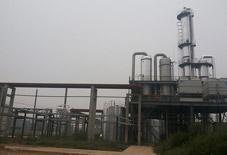As a Formaldehyde Production Plant, let me share with you.
Comparison and contrast methods
We have noticed that the iron oxide formaldehyde production process is a more
effective way to produce formaldehyde from methanol. However, in addition to the
cost of raw materials, plants using the silver catalyst process may reduce
operating costs. Therefore, if an inexpensive source of methanol is available,
silver may be a better choice, especially for smaller operations. When deciding
which formaldehyde production process to use, several other variables are
involved:

Formaldehyde Production Silver Process
Factory capacity-low-capacity formaldehyde production equipment-it may be
more economical to produce up to 5,000 tons of formalin per year using a
less-tech silver process. Large-scale plants with an annual capacity of up to
100,000 tons are most suitable for the metal oxide catalyst formaldehyde
production process. The increased production capacity of this process can help
make up for higher capital expenditures in technology. Note that the excessive
gas conduction that will be required makes facilities exceeding 100,000 tons per
year inefficient. It is recommended that large-scale operations divide
production into medium-scale metal oxide processing units.
Catalyst cost-Although it must be replaced several times a year, the overall
cost of silver catalysts is lower than that of iron oxide catalysts with a
service life of one year or more. This is because the silver catalyst can be
completely regenerated, while molybdenum can only be recovered from the iron
oxide catalyst.
Exhaust gas treatment-The exhaust gas from the silver production process
contains about 20% hydrogen, which makes it combustible, produces steam and
eliminates carbon monoxide and other organic compounds that are harmful to the
environment. Due to the low content of dimethyl ether, carbon monoxide, methanol
and formaldehyde, the tail gas produced in the iron oxide process is not
combustible. Combustion requires catalytic incinerator or fuel addition.
Steam production-The metal oxide process generates enough steam heat that can
be exported from the production unit to provide power for other processes. The
relatively low steam production in the silver refining process is completely
consumed in methanol rectification-sometimes not even enough, and steam must be
fed from outside. There is never excess steam available for export.
Product purity-Compared with the silver method, the formaldehyde produced by
metal oxide catalysis usually contains fewer impurities, such as formic acid,
heavy metals and unreacted methanol. The industry increasingly requires that the
methanol content in the formaldehyde solution is zero, and it is concentrated
(the ratio of formaldehyde to water is as high as 4:1), and urea is a stable
solution. These products are only possible using metal oxide catalysts in the
production of formaldehyde.
Our company also has Formaldehyde Production Silver Process on sale, welcome
to contact us.














